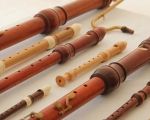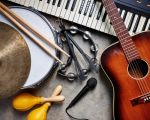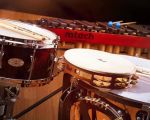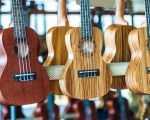The Magic of Guitar Pedals in Shaping Your Sound
As a guitarist, I've always been fascinated by the endless possibilities that guitar pedals offer to enhance and shape my sound. Whether you're looking for a subtle effect to add texture or a bold tone-shaping tool to completely transform your playing, guitar pedals can provide the tools you need to bring your musical ideas to life. In this article, I'll share some of the best guitar pedals that I’ve personally used to achieve unique sounds and offer some tips on how to incorporate them into your playing.
vbnet复制Why Guitar Pedals Are Essential for Unique Sound Creation
Guitar pedals are more than just a way to modify the volume or add some distortion. They are an essential part of a guitarist’s arsenal for expressing creativity. From achieving dreamy, ambient textures to crafting gritty, heavy tones, pedals give you control over your guitar's voice. Over the years, I've learned that experimenting with pedals can dramatically change how you interact with your instrument, giving you the freedom to explore sounds that you might not have thought possible.
Choosing the Right Pedal for Your Sound
When it comes to choosing the best guitar pedals, there are so many factors to consider. The type of music you play, your desired tone, and how you want to manipulate your sound all play a role in your selection. As I’ve experienced, it's important to start with a few essential pedals and build from there as you grow more familiar with their effects. From my own journey, I’ve found that having a combination of modulation, delay, and distortion pedals is crucial to unlocking a wide range of sounds.
Top Guitar Pedals for Unique Sounds
1. Electro-Harmonix Holy Grail Reverb
If you’re looking for a reverb pedal that can give you a lush, expansive sound, the Electro-Harmonix Holy Grail is a must-have in your pedalboard. I’ve used this pedal to create ambient soundscapes that transform a simple chord progression into something ethereal. Whether you're looking for a spring reverb to emulate classic surf tones or a hall reverb to add depth to your playing, this pedal does it all. It's versatile, easy to use, and a great way to add unique textures to your sound.
2. Boss DS-1 Distortion Pedal
The Boss DS-1 is a classic distortion pedal that has been a staple for guitarists of all genres. Over the years, I've experimented with its settings to achieve everything from smooth overdrive to aggressive, heavy distortion. This pedal allows for a lot of tonal flexibility, and it's perfect for those moments when you want your guitar to cut through the mix with a powerful, crunchy sound. It’s one of those pedals that can be used in nearly any style of music, from rock to metal to blues.
3. Electro-Harmonix Holy Stain
If you want to get creative and experiment with a variety of effects in one pedal, the Electro-Harmonix Holy Stain is a fantastic option. I was introduced to this pedal while searching for a way to combine reverb, distortion, and a variety of modulation effects into a single box. The Holy Stain offers an array of unique effects, including a reverb with a “stain” distortion and a chorus effect that adds extra depth to your sound. It’s perfect for those who want to push the boundaries of traditional tones and explore new sonic territories.
4. Moogerfooger MF-101 Lowpass Filter
For more experimental sounds, the Moogerfooger MF-101 Lowpass Filter is one of the best pedals I’ve used. This filter pedal allows you to shape your sound in ways that are incredibly unique. By adjusting the cutoff frequency and resonance, you can create sweeping filter effects that transform your guitar’s sound into something otherworldly. I love how this pedal can take simple riffs and turn them into funky, rhythmic textures, making it an essential tool for electronic, ambient, or progressive rock genres.
5. Line 6 DL4 Delay Modeler
If you’re a fan of delay and want to experiment with creating layered, echoing sounds, the Line 6 DL4 Delay Modeler is a pedal that should be on your radar. I’ve used it in countless performances to create everything from slapback delay to long, lush repeats that build upon each other. What I particularly love about this pedal is its versatility. With multiple delay modes and an easy-to-use interface, you can craft everything from subtle echoes to massive delay builds that can fill an entire room with sound.
6. Electro-Harmonix Big Muff Pi Distortion/Sustainer
If you’re a fan of powerful, saturated distortion, the Electro-Harmonix Big Muff Pi is a must-have pedal. This pedal has been used by iconic guitarists for decades and is known for its smooth, creamy distortion that can take your solos and riffs to the next level. The sustain is incredible, allowing you to hold notes for longer periods while maintaining a rich, full tone. It’s perfect for anyone who wants to add weight and warmth to their sound, making it ideal for genres like stoner rock, grunge, or heavy blues.
How to Build a Pedalboard for Unique Sounds
When I first started building my pedalboard, I had no idea where to begin. But after years of experimenting, I learned that building a pedalboard is an ongoing process that evolves with your musical journey. One important thing to keep in mind is the order in which you place your pedals. Generally, it’s best to place your distortion and overdrive pedals first in the signal chain, followed by modulation pedals (like chorus or flanger), and then delay and reverb pedals at the end. This setup allows the effects to interact in the most musical and organic way possible.
Finding Your Personal Pedal Sound
Building your perfect pedalboard isn’t just about picking the most popular pedals—it’s about finding what works best for you. I’ve spent countless hours tweaking my pedal settings, combining different effects, and experimenting with different orders to achieve a sound that feels truly unique. The beauty of guitar pedals is that there are no limits to how you can shape your sound. Whether you're adding a touch of reverb to your clean tone or creating massive soundscapes with delay and modulation, your pedalboard is an extension of your creativity.
Tips for Experimenting with Guitar Pedals
Experimenting with guitar pedals can feel overwhelming at first, but once you get the hang of it, it becomes an incredibly fun part of your musical process. Here are some tips I’ve learned along the way:
1. Don’t Be Afraid to Stack Pedals
Stacking pedals is one of the most exciting ways to create unique sounds. For example, I often stack a distortion pedal with a delay pedal to get a saturated tone that repeats in interesting ways. Try stacking different combinations of effects and see how they interact with each other—this is where the magic happens.
2. Use Your Volume Knob
One thing I learned early on is the importance of the guitar’s volume knob when using pedals. Lowering the volume while using distortion or overdrive can result in a smoother, more controlled sound. Try experimenting with the guitar's volume knob alongside your pedal settings to get a wider range of tones from a single pedal.
3. Take Advantage of Pedal Modulation
Many guitar pedals have built-in modulation effects, like chorus or flanger. Experiment with these effects to add movement to your tone. I’ve used modulation to create dreamy, swirling sounds, which are perfect for ambient music or adding texture to traditional rock music.








